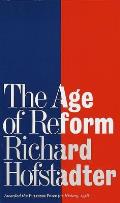I have been reading The Age of Reform by Richard Hofstadter. The book first published in 1955, won a Pulitzer Prize. The early part of the book deals with Populism around the 1890s. That was a time in which the United States was changing rapidly. Notably, it was an age of industrialization, large scale immigration, and urban growth. It was an age in which some were accumulating great wealth, an age of conspicuous consumption by those wealthy families.
It was also a time in which there was an agricultural depression, especially problematic in the west and south. The United States was on a gold standard, implying tight money, causing more problems for farmers. It was widely recognized that coining silver money would increase the money supply and increase the availability of credit; adding silver money would also be inflationary, making it easier to pay off existing debts. Not incidentally, it would be very good for the economies of the mountain states with silver mines.
Thus there were real problems and opportunities. Hofstadter points out that the response was also conditioned by myths, such as the myth of the American yeoman farmer (where American farmers were by that time commercial and organized politically), and folklore, such as the purported evil of Wall Street and London financiers. The Populist movement is described as arising out of legitimate concerns mixed with the this ideology based significantly on ideas which are based on myths and folklore rather than facts. Hofstadter points out that the malaise caused by real problems resulted in countervailing political positions in people who started from different myths and folklore.
I wonder if we are seeing a comparable situation as the Occupy and Tea Party movements respond to similar concerns but different myths and folklore about society.

No comments:
Post a Comment